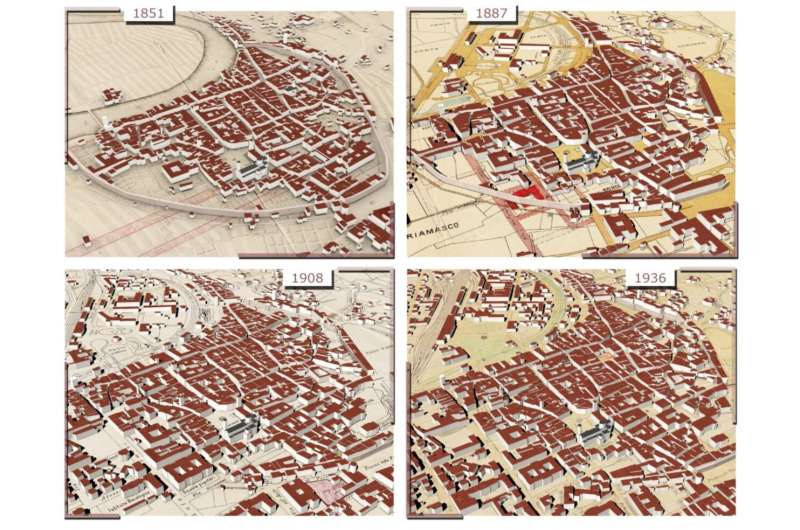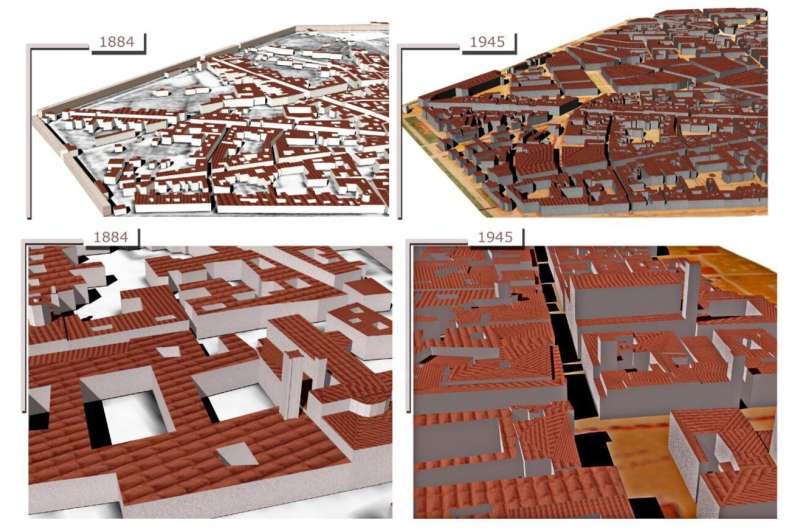Credit: Skolkovo Institute of Science and Technology
A research team from Skoltech and FBK (Italy) has presented a methodology to derive 4-D building models using historical maps and machine learning. The implemented method relies on geometric, neighborhood, and categorical attributes in order to predict building heights. The method is useful for understanding urban phenomena and changes that contributed to defining our cities' actual shape. The results were published in Applied Sciences.
Historical maps are the most powerful source used to analyze changes in urban development. Nevertheless, maps represent the 3-D world in the 2-D space, which describes the main features of the urban environment but fails to incorporate other spatial information, such as building heights. In 3-D/4-D city modeling applications based on historical data, the lack of building heights is a major obstacle for accurate space representation, analysis, visualization or simulations.
Scientists from Skoltech and 3DOM research unit of FBK Trento explored machine learning solutions for inferring building heights from historical maps.
Their method tested on four historical maps of Trento (years 1851, 1887, 1908, and 1936) and Bologna (years 1884 and 1945) reflecting the biggest changes in the urban structures over the last centuries helped to reconstruct multi-temporal (4-D) versions of these cities.
"The implemented learning and predictive procedure tested on historical data has proved to be effective and promising for many other applications. Based on few attributes for the prediction, it will soon be expanded to diverse real-life contexts with missing elevation data. The resulting models will be a great help in bridging the geospatial knowledge gap in past or remote situations," Emre Ozdemir, a Skoltech and FBK Trento Ph.D. student, explains.
Credit: Skolkovo Institute of Science and Technology
More information: Elisa Mariarosaria Farella et al. 4D Building Reconstruction with Machine Learning and Historical Maps, Applied Sciences (2021). DOI: 10.3390/app11041445
Provided by Skolkovo Institute of Science and Technology

























